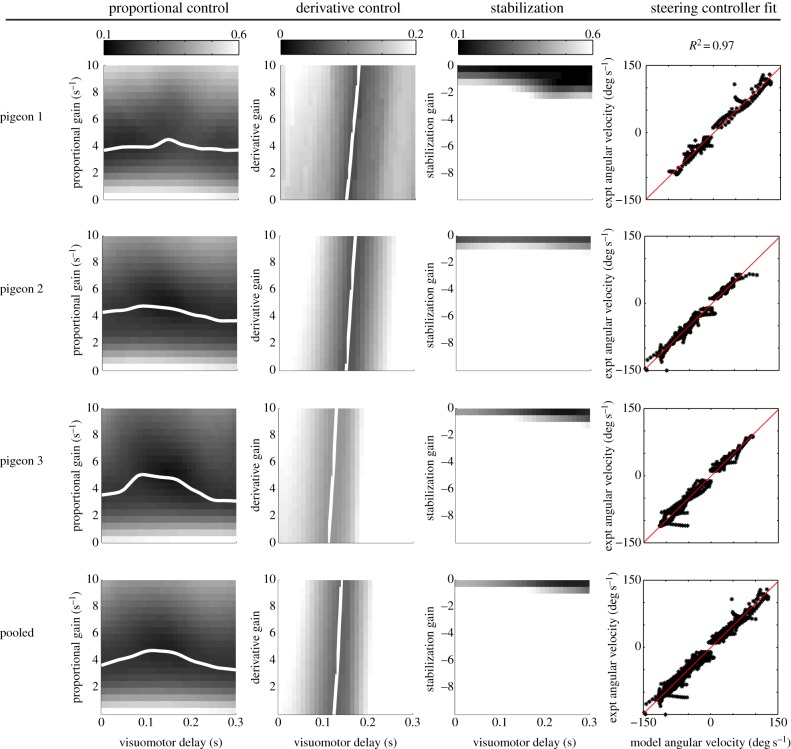Figure 5.
Steering controller tuning. Tuning was based on the average deviation between model-predicted and observed flight directions, determined every 10 ms time step for the best steering aim, for all possible combinations of gains and delay, and for all obstacle flights. To make the flight controller independent of the guidance rule, the tuning process assumed that the pigeon always aimed to one of the available gaps without imposing an a priori rule on gap selection, but instead selected the gap that resulted in the best fit with the observed flight path. The proportional controller was broadly tuned with a minimum deviation band centred about a gain of approximately 4 s−1 (column 1). For the derivative control, however, a visuomotor delay of approximately 130 ms was strongly selected but with a broadly tuned derivative gain (column 2). We implemented steering inertia as a stabilizing term. The stabilization gain is, by definition, negative and is generally quite small (column 3). We extracted the controller parameters that provided the best fit to the observed data; these are presented in table 1 (see text for details). We then demonstrated that pigeon obstacle flights can be modelled as aiming to a gap by regressing the observed angular rate of change of flight direction against that predicted by the best fitting controller parameters. The steering controller predicted the observed steering extremely well (R2 = 0.97 for all four cases; column 4), under the paradigm of gap aiming. (Online version in colour.)

